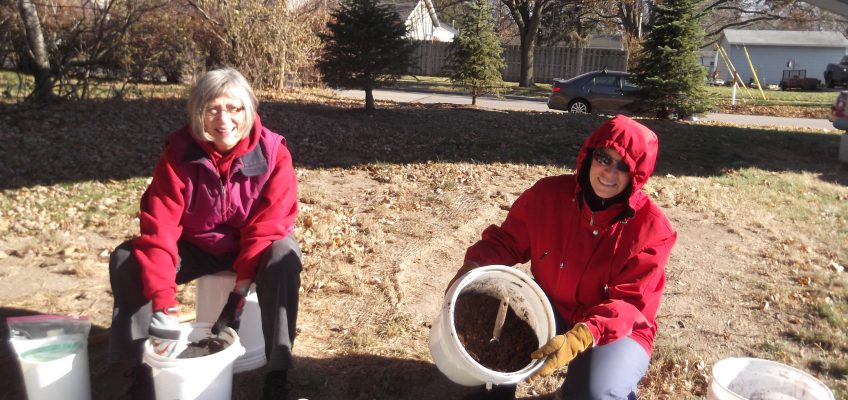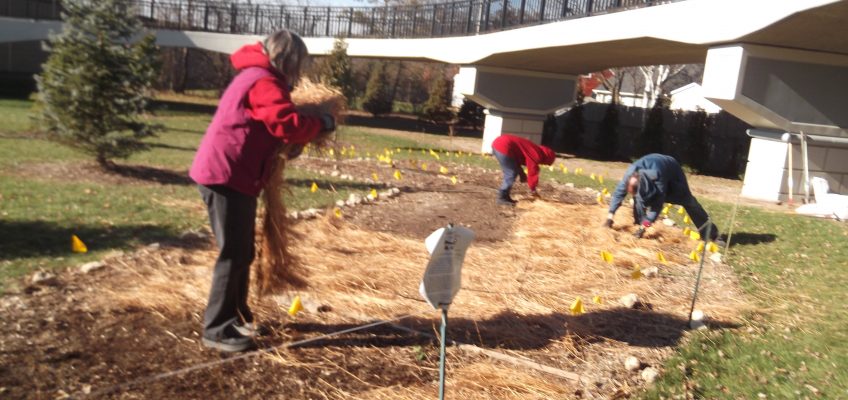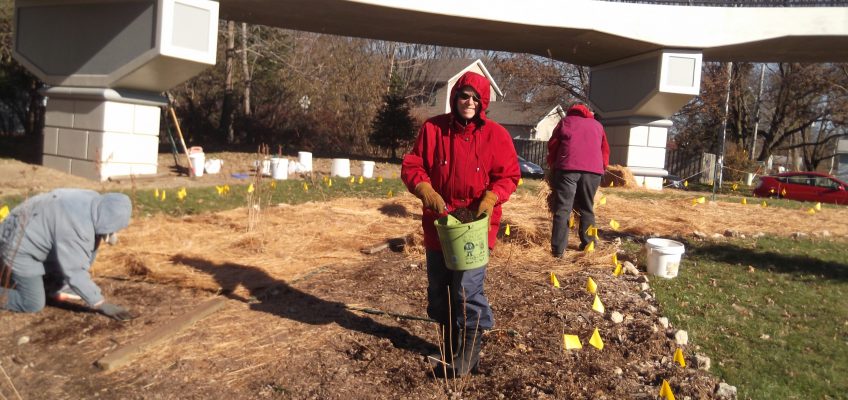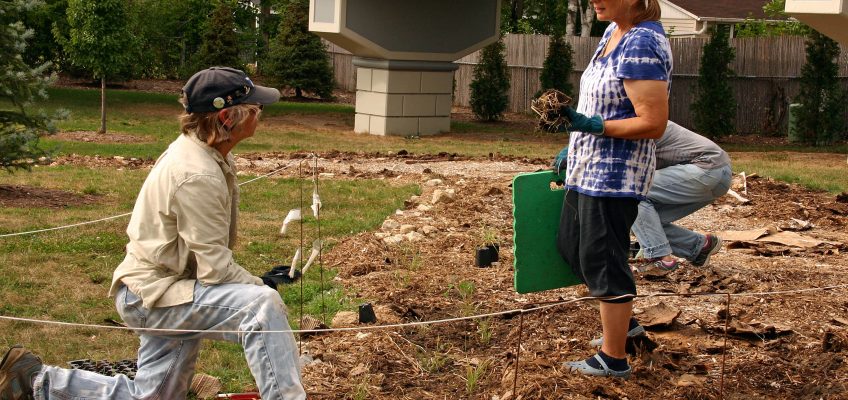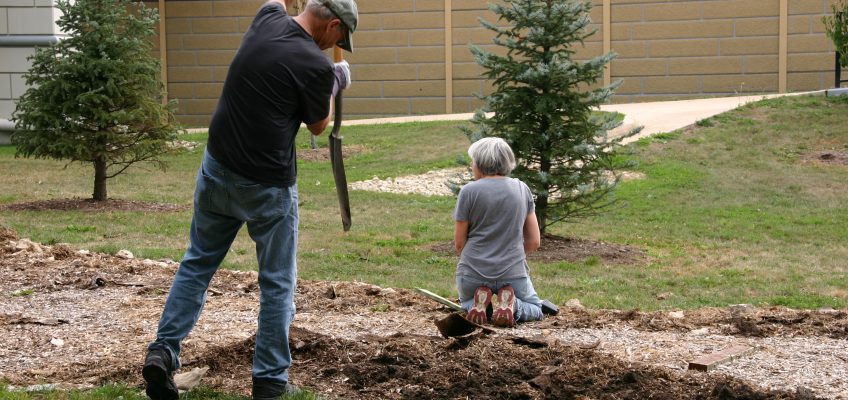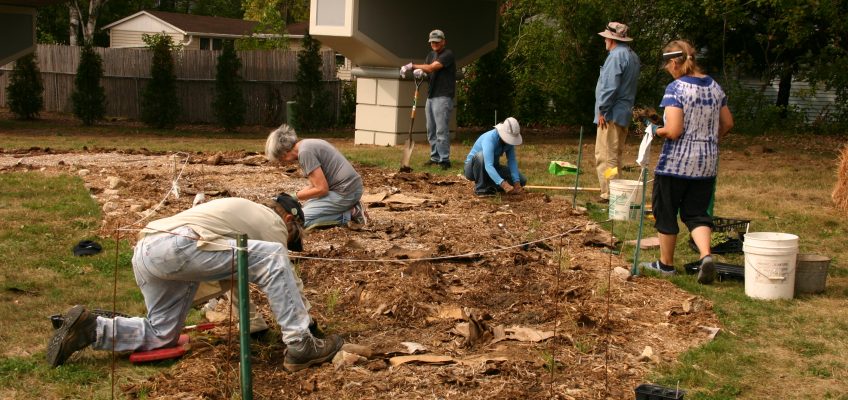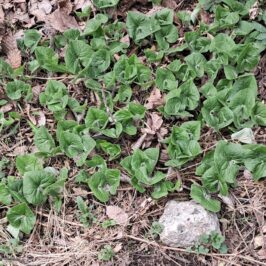October and November were very busy and productive for the Gardening Volunteers. We held six sessions in October with anywhere from two to ten volunteers, planting approximately 200 small seedling plants grown by myself and by one of our Arboretum advisors. We started by creating a border of grasses, with Sideoats Grama grass and Little Bluestem. Several wildflower species were put in, including Marsh Milkweed and Whorled Milkweed, Culvers Root, Ironweed, Columbine, Wild Strawberry, and Meadow Blazingstar.
A highlight of the planting sessions was the participation of Girl Scout Cadet Troop 2911, a very lively and energetic group of sixth graders. Five Scouts and a non-scouting friend, with their troop leader Laura, and a few of our volunteers spent about two hours putting in lots of plants. Thanks to four gardening volunteers and neighbors who generously donated native plants from their yards, the Scouts and volunteers transplanted close to three dozen wildflowers, including Black Eyed Susan, Brown Eyed Susan, Golden Alexanders, Coreopsis, Sky Blue Aster, Canada Anemone, New England Aster, and Thimbleweed. Over all at least 55 volunteer hours were spent in October’s planting efforts.
In November we accomplished the seeding! First we spent two sessions raking off several inches of wood chips and pulling up cardboard. This was necessary to provide good contact with the soil for hand seeding the area. And on the 22nd (the day before Thanksgiving), five of us hand-seeded the area with our Monarch Habitat seed mix. This mix contained three milkweeds species and twenty plus other wildflowers, as well as four prairie grasses. The garden had been marked off into eight sections, and the seed mix likewise divided. The seeds were mixed into buckets of dampened peat moss, along with the nurse crop of winter wheat. Then we spread each bucket as evenly as we could over a section.
We also spread seeds of several individual species in patches to create species groups and “color swatches”. This should aid in attracting butterflies, as well as provide visual appeal for us humans. Included were some flowers not present in the mix, such as Whorled Milkweed, Showy Goldenrod, Spotted Joe Pye weed, and Ox-eye Sunflower, as well as some that overlapped with the mix. All of the garden was then covered with a layer of weed-free straw from Little Bluestem. About 27 volunteer hours went into November’s efforts.
The seeds will remain dormant over the winter, and will experience the cold moist period that many of them require before they will germinate. We will have to wait patiently until Spring, when we will watch with great interest for seeds to sprout and plants to grow.
A very big Thank You is owed to all of the Gardening Volunteers who contributed time and effort in so many ways to this project! From the initial boundary marking and site preparation, to hauling and spreading mulch, collecting and laying down cardboard, donating plants, and at last, planting and seeding, over 120 volunteer hours were put in. Special thanks to our Arboretum advisors, Judy Kingsbury and Susan Carpenter, for their support and suggestions, which kept us from going astray several times. And thanks also to the Crawford-Marlborough-Nakoma Neighborhood Association for sponsoring this project and covering costs.

